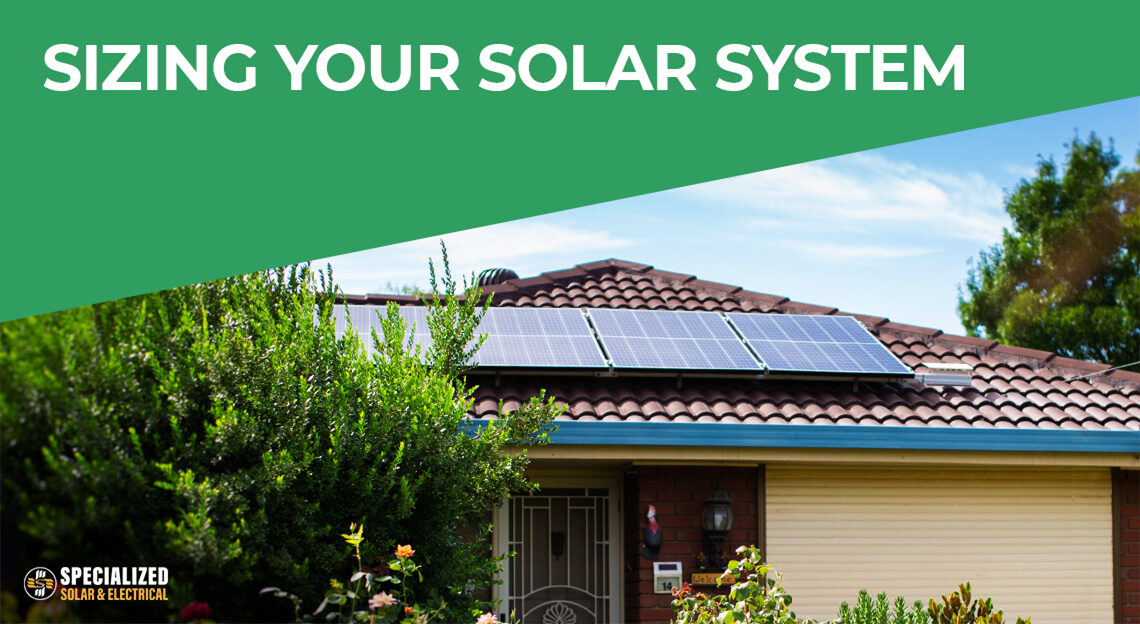Ten years ago, the average size residential solar system was around 2.6kW (approx. 13 panels at 200 watts per panel). Today it’s around 6.6kW (approx. 17 panels at 390 watts per panel). Industry projections are for the average size to increase to 10kW or more. In fact, that’s happening already. Look around and you’ll see homes covered in black panels. Count them if you like; 25 panels means the house probably has a 10kW solar system.
So, arguably those homes with a 2.65kW possibly went too small. But that was a decade ago when solar prices were five times higher than today.
Now, solar panel systems are much more affordable. A 10kW solar system today costs less than a 2kW system in 2012.
Affordability is a big reason why rooftop solar systems are increasing in size. Another big reason is rising electricity prices and the trend towards an all-electric home, not to mention electric vehicles.
So, that’s the context. But how do you work out what size solar panel system is right for your home?
The answer depends on a variety of factors which will be unique to every home. That’s why there’s never a ‘one size fits all’ solar system. It’s also why we tailor our quotation process to meet the individual requirements of each customer.
This post provides a practical guide to help you work out the right size solar power system for your home. It covers:
- Your objectives
- Current electricity usage
- Future electricity usage
- Calculating system size
- Roof space: have you got enough?
- Network distributor: any limits?
1. Your objectives
There are lots of reasons why you may want solar panels on your home. The most common are:
- Reduce your electricity bills
- Get battery storage and power your home with solar, 24/7
- Charge your electric car for free
- Reduce your carbon footprint
Whilst budget is always a factor, it’s good to have clear goals in mind. You may want to get the solar panels installed now and add battery storage and electric vehicle charging later. That’s not a problem as there are smart solar systems that make it easy to add more panels down the track. If this is the case for you, let us know as we can design a system that can easily be extended when your budget permits or needs change.
2. Current electricity usage
Next, you need to find out what your average daily electricity usage is. You can find this information on your electricity bills where it will state the daily usage (in kilowatt hours), or monthly or quarterly.
Gather your usage data from 12 months of electricity bills to work out the daily average electricity usage in kilowatt hours over a year.
This will tell you how your electricity usage varies throughout the year. If you have air conditioning and a pool pump, it could be that your summer electricity bills are the highest ones. Alternatively, if you have an old-fashioned electric hot water system and electric heating, your winter bills are likely to be big.
The average Australian home uses around 18-20 kilowatt hours of electricity a day. However, this varies widely between households. A four-person home with pool pump and aircon may use 40 kilowatt hours of electricity a day. Whereas a single person may only use 10 kilowatt hours of electricity a day.
It’s also important to consider the times of day you use most electricity. Most modern appliances have timers, and some can even be remotely controlled via an app, so even if you aren’t home, you can power them up in the day to run on your free solar power.
3. Future electricity usage
Electric vehicles (EVs) are estimated to account for at least 30 per cent of new car sales by 2030. If you haven’t already got one, chances are your next car – or the one after that – will be an EV.
With EV charging, it’s best to think about getting enough solar to partially charge your EV every day to cover your daily commute. As a rough guide, you should count on adding another 3 to 6kW of solar panels, depending on the size of your EV battery.
When it comes to batteries, the average size home battery is between 10 kilowatt hours and 13 kilowatt hours. You would need a solar power system that’s at least 6.6kW to produce enough power to charge your battery and provide daytime power. But if you add an EV to the mix, you will probably need more than 6.6kW of solar panels.
In addition to EV-charging, it’s worth thinking about whether you want to make your home all-electric. With soaring gas prices, and the high environmental cost of gas, many people are seriously thinking about cutting their gas connection. Electric hot water heat pump systems and reverse cycle air conditioners are extremely efficient and cost-effective to run, particularly when powered by your own free solar power.
4. Calculating system size
Let’s use an example to demonstrate how solar systems are sized. Let’s say your home uses an average 24-kilowatt hours of electricity every day and this is even across the year.
The rule of thumb is to divide your average daily kilowatt hour usage by 4 to work out the size solar panels system. Using this method, you get a 6kW solar system.
Before settling on this figure, it’s worth considering:
- Your hot water system: Can it be powered with solar?
- Your heating: If you’re on gas, it might be worth switching to a reverse-cycle air conditioning system which will save you hundreds of dollars a year.
- Battery storage: Is this on your radar?
- Electric vehicle: Do you intend to get one within the next 5-10 years?
Depending on your answers, an 8kW or 10kW solar system may be more suitable. Ask for a quote and work out the cost per watt. Larger solar panel systems should be cheaper on a cost per watt basis. This means the bigger your system, the more solar power you get for every dollar spent.
5. Roof space: have you got enough?
Solar panels have got a lot more powerful, so you don’t need a massive roof to get a lot of solar electricity. The table below shows how much roof space a typical 6.6kW and a 10kW solar system requires. For a 6.6kW solar system, you’ll need around 29m2 of suitable roof space, and for a 10kW system you’ll need around 44m2.
| Panel | Watts / panel | Panel dimensions | Area per panel (m2) | 6.6kW solar panel system | 10kW solar panel system | ||
|---|---|---|---|---|---|---|---|
| # panels | Roofspace (m2) | # panels | Roofspace (m2) | ||||
| REC | 410 | 1.8 x 1 | 1.8 | 16 | 28.8 | 24 | 43.9 |
Ideally, the roof space should be unshaded without any nearby obstructions like chimney, skylights, TV antennas etc. We use the latest solar software to identify the extent of shading on your roof at any time of day, and any time of year. With this information, we can work out the best layout of your solar panels to ensure they capture as much sunlight as possible.
6. Network distributor: any limits?
Distributed Network Service Providers, or DNSPs, oversee the poles and wires that bring electricity to your home. They make the rules about connecting solar and battery systems to the grid.
Most DNSP allow at least 5 kilowatts of inverter capacity per phase.
Given that most homes have a single-phase power supply, this means your DNSP may approve you for a 5kW solar system (based on the inverter size), with up to 6.6kW of solar panels (as they let you oversize the panels by 33 per cent).
Some DNSPs allow you to install 10kW or more per phase.
However, a DNSP may say that you’re not allowed to export all the surplus solar electricity from your system to the grid. This is called export limiting. This varies on a property-by-property basis and is fast becoming a non-issue. That’s because:
- DNSPs are gradually upgrading their infrastructure to allow more solar exports
- The best payback from solar is when you maximise self-consumption
If you request a quote, we’ll check out the connection rules for your property with your DNSP. It can be a limiting factor in solar system sizing, but there are ways around it which we can advise on.
Keen to talk solar?
If you’re interested in solar panels or a battery for your home, get in touch. As a Clean Energy Council Accredited Solar Retailer, we meet and beat the highest standards in the solar industry. We’re abreast of the latest changes in solar technology, in particular the ones that stand to benefit our customers the most. That’s why talking to us means you’re getting the best solar advice for your home.












